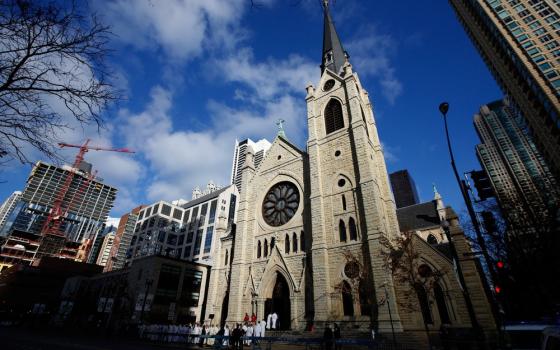A SECULAR AGE
By Charles Taylor
The Belknap Press of Harvard University Press, 874 pages, $39.95
Readers of Charles Taylor’s encyclopedic work on secularity who expect to find a single explanation of the phenomenon, or even one definition of the concept, will be disappointed. What they will find is a comprehensive examination of how Western culture has influenced Christian teachings and practices and how churches have reacted to the increasing marginalization of their beliefs in the modern era.
Dr. Taylor, the winner of the 2007 Templeton Prize, proposes three forms of secularity: the retreat of religion in public life, the decline in belief and practice and the change in the conditions of belief. In theorizing that the identification of religion as the opponent of human autonomy contributed to a decline in belief and practice as a self-fulfilling prophecy, he displays a refreshing humility for a scholar of his stature. “Here I confess that I am making stabs in the dark,” he writes. “A fully satisfactory account of this difference, which is in a sense the crucial question facing secularization theory, escapes me.”
While maintaining that there is no general rule for identifying one order of motivation as always the driving force behind historical change, Dr. Taylor readily acknowledges the ideas he has learned from other historians and sociologists of religion -- another refreshing rarity in a work of this magnitude.
In examining the rise of what he calls Providential Deism in the 17th and 18th centuries, Dr. Taylor says this was demonstrated in the downgrading of the concept of God’s grace, the element of mystery in religion, and the belief that God is planning a transformation of human beings. Although Dr. Taylor cites such thinkers as Matthew Tindal, Jean Leclerc and Jacques Bernard as having advanced these ideas, the scholar comments that “even people who held to orthodox beliefs were influenced by this humanizing trend; frequently the transcendent dimension of their faith became less central.”
In Dr. Taylor’s tracing of history, challenges to traditional Christian beliefs were being advanced long before Darwin’s theory of evolution, which was used after the fact as either the justification or scapegoat for a lack of belief. Citing such deistic writers as Thomas Burnet and Giambattista Vico -- both of whom lived centuries before Darwin -- the sociologist writes that “there is a struggle between thinkers with complex, many-leveled agendas” that cannot be reduced to a simple conflict between science and religion.
Other forces advancing secularism included the creation of works of art, literature and music that could be experienced independently of religious practices such as listening to a Mass in a concert hall as an aesthetic experience rather than an act of worship. Dr. Taylor says these activities helped to create what he calls “a kind of middle space, neither explicitly believing, but not atheistic either, a kind of undefined spirituality.”
What makes today’s form of secularism different from its predecessors, the scholar says, is that it is marked by an unprecedented pluralism of outlooks, both religious and nonreligious, in which the proportion of religious belief is smaller than ever before. What does this mean for the church of Rome? Dr. Taylor, himself a Catholic, wryly observes, “What Vatican rule-makers and secularist ideologies unite in not being able to see is that there are more ways of being a Catholic Christian than either have yet imagined.”
Dr. Taylor stops short of advocating for Catholic faith or even Christianity in general, but he does insist that “for any liveable understanding of human life, there must be some way in which this life looks good, whole, proper, really being lived as it should. The utter absence of some such would leave us in abject, unbearable despair. So it’s not that unbelief shuns Christian ideas of fullness for nothing at all; it has its own versions.”
For the evidence of this, consult Dr. Taylor’s more than 770 pages of text and more than 70 pages of footnotes.
Darrell Turner writes the annual religion section for the Encyclopedia Brittanica.
National Catholic Reporter September 5, 2008



